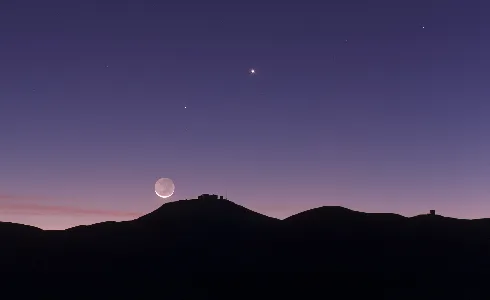The method paves the way for life to be detected on exoplanets

Earthshine can be seen on the Moon as it rises above ESO's Paranal observatory
Image credit: ESO/B Tafreshi/TWAN
Astronomers at ESO's Very Large Telescope (VLT) have made a remarkable discovery: life on Earth. No, they haven't just watched an episode of Attenborough's The Blue Planet, they've used a new technique that involves observing reflected light from the Earth bouncing off the Moon. The pioneering method could pave the way for similar observations to be made of exoplanets, hopefully generating results that are just as exciting.
“We used a trick called 'earthshine observation' to look at the Earth as if it were an exoplanet,” says ESO's Michael Sterzik, lead author of the paper that features in the March edition of the journal Nature. “The Sun shines on the Earth and this light is reflected back to the surface of the Moon. The lunar surface acts as a giant mirror and reflects the Earth’s light back to us — and this is what we have observed with the VLT.”
The astronomers studied the Earth light, looking for markers such as combinations of gasses that betray the telltale signature of organic life. Since these fingerprints are notoriously hard to detect by using the conventional method of studying the colour of light, the astronomers looked at the light’s polarisation as well, a technique know as spectropolarimetry.
Using this approach the signs of life on Earth became apparent. The team were able to detect that the Earth has oceans, that the atmosphere has partial cloud cover and that it has vegetation. They could even note changes in cloud cover and vegetation as different areas of the Earth reflected off the Moon. The results mean that Earth can now be used as a benchmark for when astronomers come to apply the same techniques to the atmospheres of distant alien worlds.
"Spectropolarimetry may ultimately tell us if simple plant life — based on photosynthetic processes — has emerged elsewhere in the Universe," says Sterzik. “But we are certainly not looking for little green men or evidence of intelligent life.”
